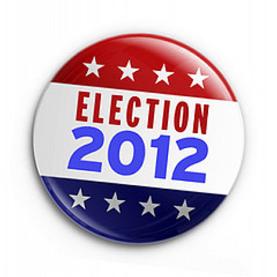 Bob Blendon and his can-do team at the Harvard School of Public Health have done the heavy lifting for us by analyzing 36 telephone polls (that’s “polls,” not “poles”) looking at the role of health reform in the 2012 election cycle. I knew Bob Blendon when I was affiliated for a decade with Institute for the Future, and Blendon was affiliated as well as health politics consultant to the health team. He is the guru on this topic, so when I spotted his article, Understanding Health Care in the 2012 Election in this week’s New England Journal of Medicine, I dashed to the PDF ASAP.
Bob Blendon and his can-do team at the Harvard School of Public Health have done the heavy lifting for us by analyzing 36 telephone polls (that’s “polls,” not “poles”) looking at the role of health reform in the 2012 election cycle. I knew Bob Blendon when I was affiliated for a decade with Institute for the Future, and Blendon was affiliated as well as health politics consultant to the health team. He is the guru on this topic, so when I spotted his article, Understanding Health Care in the 2012 Election in this week’s New England Journal of Medicine, I dashed to the PDF ASAP.
An average of the polls found that 81% of people say that health care is a very important issue in their vote for president.
Looking under the hoods of the 37 polls, they found that health care is the second most important issue in the election among likely voters in 2012. This is the highest position that health care has ranked since the 1992 election. 1 in 5 voters said “health care and Medicare” was the most important issue in their choice of Presidential candidate this year — well behind “the economy and jobs,” which was ranked #1 by 51% of the electorate.
Third place this year went to Federal budget deficit and taxes (14%), followed by abortion (4%), the War in Afghanistan (2%), and immigration (2%).
65% of U.S. voters (2 in 3) said the problem of health care costs in the U.S. has worsened in the past five years, and only 27% of people saw quality of care improving. About the same percentage thought quality in health care was no worse.
There are four key health care issues identified by each Presidential campaign this year:
- the Affordable Care Act
- the future of Medicare
- Medicaid, and changing funding to a block grant for states
- Limits on the availability of abortion services.
Among people for whom health care and Medicare was the most important issue in terms of Presidential choice, 41% said they would be much less likely to vote for a candidate who would repeal all or part of the ACA. 39% of these voters also said they would be much less likely to vote for a candidate who changed Medicare into a voucher system (fixed sum of money to use to purchase health insurance coverage).
Among people for whom abortion was the most important issue in Presidential choice, 61% said that they would be much more likely to vote for a candidate who would place substantial new limits on abortion availability; 24% of people would be much less likely to vote for that candidate.
Blendon et. al. believe that while health care isn’t the #1 issue for voters choosing Presidential candidates, it could play a determining role for “swinging the balance among some voters.” They conclude that, with the exception of voters who select abortion as their top issue, those who select health care as their top voting issue are much more likely to support the policies of Obama than Romney.
Health Populi’s Hot Points: How President Obama and Governor Romney address the challenge of the federal budget deficit will shape the future of federal health spending, according to Blendon’s team’s read on the situation. This is not a trivial point to consider when picking Presidents on 6th November 2012. Health care spending is the long-term driver of the U.S. budget deficit. We can’t know what is in the minds of the two Presidential candidates when it comes to cutting the deficit: both have described two different approaches to cutting taxes, and cutting spending, with Romney planning to raise defense spending by $2 trillion (with a “t”).





 Gil Bashe, Chair Global Health and Purpose with FINN Partners,
Gil Bashe, Chair Global Health and Purpose with FINN Partners,  Grateful to Gregg Malkary for inviting me to join his podcast
Grateful to Gregg Malkary for inviting me to join his podcast